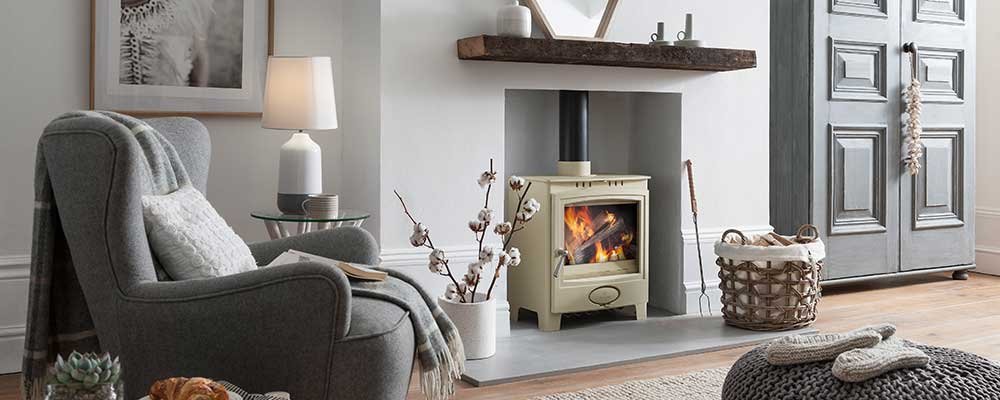How to light, control and maintain a stove fire

So, you’ve bought your wood-burning or multi-fuel stove, it’s been installed and is now taking pride of place in your home, ready to be used. But, like many first-time stove owners, you may be slightly unsure how best to light and control the appliance itself. Here at Arada, we believe there’s a fine art to lighting the perfect fire. From ensuring your wood is fully seasoned, to understanding the various air controls, there are many components and contributing factors that all work together to ensure optimum burn and the most efficient heat output for your space.
Read on and follow our step-by-step guide to lighting, controlling and maintaining your Arada stove.
Wood burning Stoves
@aradastoves
1) Good quality wood fuel
First things first, consider the quality of the wood you’re using as fuel. Unseasoned or ‘wet’ wood is counter-productive for burning, and will result in damaging sticky tar deposits inside of the appliance. Only burn fully-seasoned wood, ideally hardwood, with a moisture content of below 20%. If you’re collecting and chopping your own timber, the drying process can take up to a year so make sure you prepare well in advance. Before you burn, use our handy electronic moisture meter to determine the water content of your wood.
2) Air Supply
In order to burn, wood needs a good supply of oxygen. When you’re ready to light your stove, fully open both the primary and secondary air controls. The primary control regulates air entering the fire box chamber, supplying air to the underside of the fuel bed, whilst the secondary control (also known as the air wash system) supplies an over-draught of air to the flames and glass viewing panel to keep it clear of soot and dirt.
3) A great flame needs a solid foundation
To establish an impressive fire, you’ll need to start by building a good base. Place scrunched up newspaper and a layer of dry kindling wood onto the stove’s grate, with the addition of two or three firelighters if needs be. In contrast to your pre-cut logs, the best wood for kindling is dry softwood as it is less dense than hardwood and therefore lights easily and burns quickly.
4) Time to light the fire...
Ignite the paper and / or firelighters. Once the kindling has caught light, you should close the fire door to, leaving it ajar by about 10mm. By doing this, you will aid the flue air pull during the initial lighting of the fire. The flue temperature and draw should be established after about five minutes, and the kindling reduced to form an ember bed.
5) ..now add a little more fuel..
Now it’s time to add your seasoned wood. Start with medium-sized logs, and increase to your larger cuts as the fire develops. Piling on large logs at this early stage may smother and extinguish the flames. Now you can fully close the stove door.
6) ..you're good to go!
After about 10 minutes you should fully close down the primary air control and then use the secondary to control the burn rate. We advise closing it down to approximately half. Leaving the air controls fully open will result in the stove operating at too high a temperature (over firing), which will cause damage to internal components, and emit an inefficient and unregulated burn rate and heat output.
7) At the end of the evening
After an evening of relaxing in front of your roaring fire, you can simply let the flames reduced down to embers and go out. Do not be tempted to shut down all of the air controls completely however, as this will fill the burn chamber and flue with tar deposits and residual smoke.
Multifuel stoves - when using smokeless fuel
Just a bit different..
In contrast to wood, solid fuel burns best with its main air supply coming from underneath the fuel bed as opposed to above. To achieve an optimum burn, the fire will be controlled by the primary air control. Go about laying your fire in the same method as with a wood-burning stove but set the primary air control to fully open, and the secondary to about a quarter open. Once you’ve established a good base to your fire, load the stove fire bed with solid fuel and regulate the burning rate by adjusting the primary air control, leaving the secondary open just enough to enable a sufficient supply of air to keep the glass clean.
Related Articles
Using a stove
- 28th November, 2018.
